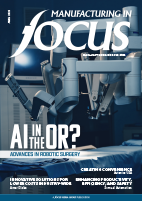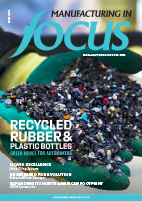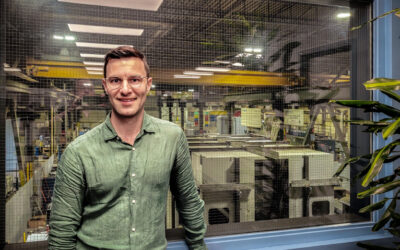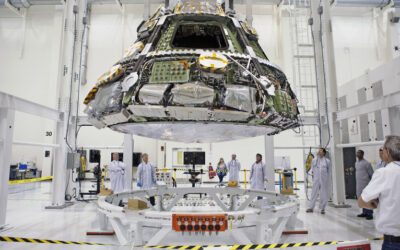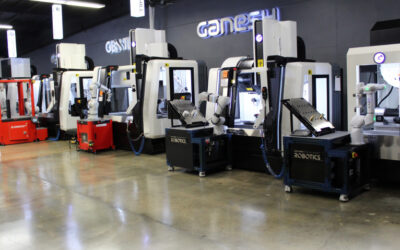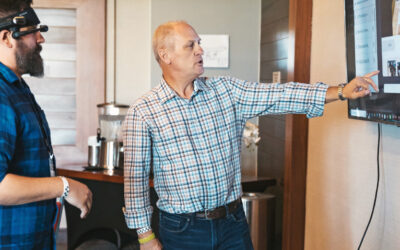Alongside industrial health and wellness awareness, Nederman supports manufacturing facilities and the automotive trade in providing trades personnel with the cleanest, safest air.
Old-style manufacturing facilities covered in grease and dust are becoming a thing of the past. Upgraded health and safety measures in the workplace are increasingly common and necessary for meeting industry standards, so Nederman Canada creates and manufactures products that extract and mitigate airborne pollutants in industrial manufacturing and automotive facilities. The company’s products capture fine particles, mist, fumes, dust, and other airborne residues created during industrial processes, preventing them from being inhaled by people or released into the environment. The company’s Canadian outfit is headquartered in Mississauga, Ontario and takes its mandate seriously.
“Every product that we create and manufacture [answers] to this goal. We want to bring awareness to people in the workplace that clean air is important for better health,” says Ryan Borgona, Product Marketing Manager.
Enhanced dust and fume extraction is believed to lower the number of sick leave days needed and, perhaps best of all, is also shown to increase the number of job applications a manufacturer gets each year. As applicants insist on working in cleaner environments, manufacturers that ensure their facilities are clean and safe remain the top choices of those choosing long-term employers.
Through its innovation and attention to detail, the company has made invaluable contributions in the field of combustible dust safety. It also considers itself to be the only one of its kind in Canada and one of few companies in the country equipped with the education and certification to design and engineer combustible dust solutions, a function that, according to Borgona, is rarely offered by its competition. “We design and engineer combustible dust applications, and we make sure it works,” he says.
Nederman’s solutions cater to all needs. Whether organizations need to upgrade, want to remedy known problems, or want to audit existing extraction systems for possible faults, this company is always ready to assist. Nederman also supports clients that want to plan for future facilities and covers a tremendous selection of industries.
“It’s difficult to find an industry that we are not involved in,” says Borgona. From manufacturing to fire stations, diesel exhaust extraction in car repair shops, mobile fume extraction, and industrial vacuuming, Nederman is ready with the best solutions available.
After working shoulder to shoulder with a wide variety of industries for nearly eighty years, Nederman knows the pitfalls and plusses of every fume extraction system available on the market today. Older methods include traditional extraction methods like overhead general ventilation hood-type fume capture systems, and are no longer the best approach.
“Over the years, research has come to find that it is inadequate for a lot of processes,” says Borgona. According to this hands-on product marketing manager, this method is most commonly encountered at welding operations. “Sure, the fumes are being captured [by] a hood, but it [still] has to pass by the welder’s face before it gets [captured],” he warns.
At its very core, the company’s mission is to protect workers by capturing harmful airborne substances before they can be inhaled. To this end, the company works with on-torch extraction technology that is far better than that of the late eighties when the idea was first put into practice. This method of fume extraction means that welding fumes are vacuumed up and removed next to the arc, preventing toxic fumes from entering the atmosphere and keeping welders safe from inhaling them.
Another aspect that makes this method superior to the overhead hood method is that it prevents the escape of welding fumes, and the vacuum systems can double as a workstation housekeeping tool. “A lot of places will sometimes close specific [work areas] to help protect [and] limit the fumes that escape. But then you still have the welder breathing the fumes,” he says.
By advancing effectiveness and profitability as well as safety, the company has established itself as a favourite industry partner. A vast range of accessories, specialized extraction products, and expert support services, makes Nederman easy to work with and trusted in times of emergency.
It also serves customers far beyond North America. In places where it does not have a corporate presence, Nederman trusts its vast network of carefully appointed distribution and configuration partners to take care of local clientele.
Nederman Canada’s parent company was founded in Helsingborg, Sweden in 1944 by Philip Nederman, and offered products and services that enhanced safety and efficiency. The Canadian company was founded in 1989, carrying forward that tradition of making workplaces safer. Today, its international headquarters remain in its home town.
The total North America staff tallies around two hundred people, while the company’s small, close-knit Canadian team has fifteen. Nederman prides itself on keeping on top of industry developments and continuously improving. Local partners also benefit from regular, dedicated training sessions that share knowledge and skills.
Over the past two years, the company has grown greatly. This is partially thanks to the acquisition of Auburn FilterSense LLC and Luwa Air Engineering AG in 2018. With these acquisitions came groundbreaking new technology, including its very special FibreDrain technology. Here, specially designed fibre bed filters capture, coalesce and drain the sub-micronic particles of oil, smoke and mist generated by heavy-duty industries.
If left unfiltered, the oil covers workshops in a thin film of tacky residue that adversely affects not only human respiratory systems but also sensitive equipment used in such areas. FibreDrain technology greatly improves industrial oil mist capturing and filtering, making this invaluable in facilities where such fumes are generated.
As safety education in the trades progresses, tradespeople are becoming ever more aware of workplace hazards such as dust and fumes, and they are choosing health. “When you go to welding school, you learn what welding fumes can do to you. This wasn’t the case in the past,” says Borgona. However, expectations are changing.
With fewer people choosing trades as a career option, it has become imperative for employers to ensure staff retention by making their industrial facilities uphold the latest health and safety practices. This is a trend that is highly unlikely to change any time soon.
All this is good news. Because, by showing that these professions are a safe, clean, and healthy way of earning a living, North America’s manufacturing industries could experience a resurgence in skilled workers entering the trades. As the world economy determines the impact of post-COVID-19 market conditions, Nederman is set to continue supplying its industry partners with clean air.



